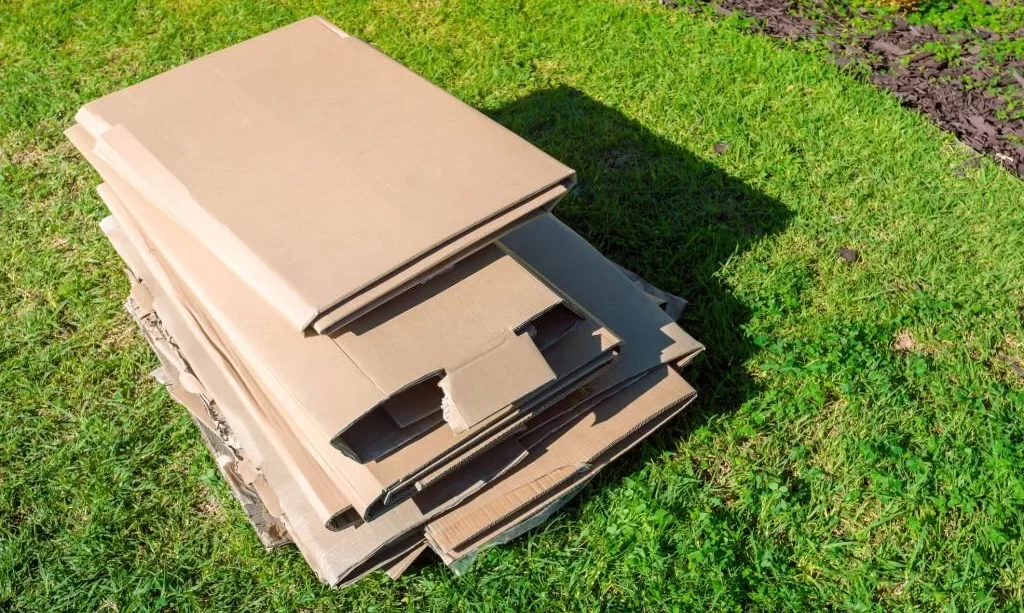In our modern world, cardboard has become an essential material, serving as the packaging for countless goods, a reliable medium for shipping, and the blank canvas for creativity. Its prevalence is so ingrained in our daily lives that it’s easy to overlook the environmental impact of this seemingly humble material. The question of how long cardboard takes to decompose has gained significance as we strive for more sustainable practices and grapple with the management of waste.
This article embarks on a journey through the life cycle of cardboard, delving into the intricacies of its decomposition process. We will explore the factors that influence this process, understand the composition of cardboard, and gain insight into the environmental implications of our cardboard consumption. The answers to these questions offer a deeper understanding of our relationship with this versatile material and guide us towards responsible, eco-friendly choices.
Cardboard Composition
To comprehend the journey of cardboard decomposition, it’s essential to first grasp the fundamental components of this ubiquitous material. Cardboard is a composite material, typically made from three layers: the linerboard, fluting, and another layer of linerboard. Linerboard is the smooth, flat material on the outside, while the fluting consists of the wavy or corrugated layer sandwiched between the linerboards. This composition provides cardboard with its strength, flexibility, and rigidity.
The manufacturing process of cardboard involves pulping wood fibers, often sourced from trees like pine and spruce. These wood fibers are mixed with water, turned into a pulp, and then pressed into sheets. These sheets are further treated and combined to create the final product. While cardboard primarily consists of organic materials, it can also contain additives like glues, inks, and coatings used for printing and protection.
Understanding the composition of cardboard is essential because it affects both its durability and decomposition. The organic nature of cardboard makes it biodegradable, but the presence of additives can influence the decomposition process. This complexity underscores the importance of considering multiple factors when estimating how long it takes for cardboard to break down naturally.
Factors Influencing Cardboard Decomposition
Cardboard decomposition is a dynamic process influenced by several factors. These factors can vary widely, leading to different rates of decomposition in various settings. Some of the key factors that play a role in cardboard decomposition include:
Environmental Conditions: The environment in which cardboard is placed plays a significant role in its decomposition. Factors such as temperature, moisture, and oxygen levels can either accelerate or decelerate the process. Warmer, humid conditions tend to expedite decomposition, while dry, cold environments may slow it down.
Cardboard Thickness and Type: The thickness and type of cardboard matter. Thicker cardboard may take longer to decompose due to its denser structure, while thinner cardboard might break down more rapidly. Additionally, the presence of coatings, inks, or laminates can hinder decomposition.
Presence of Contaminants: Contaminants such as plastic residues, tape, or non-organic materials can impede the natural decomposition of cardboard. When cardboard is contaminated, it may take significantly longer to break down, and in some cases, it may never fully decompose.
The interplay of these factors results in variations in the decomposition process, making it challenging to provide a one-size-fits-all answer to the question of how long cardboard takes to decompose. It’s in the consideration of these variables that we gain a more nuanced understanding of cardboard’s environmental impact and how to manage it responsibly.
The Decomposition Process of Cardboard
The decomposition journey of cardboard is a fascinating process that begins when this sturdy material is exposed to the elements. It’s worth noting that cardboard is an organic material, primarily composed of cellulose fibers derived from wood pulp. This organic nature is what allows cardboard to biodegrade, returning to its elemental components. The decomposition process can be broken down into several stages:
- Initial Breakdown and Microbial Activity: When cardboard is exposed to environmental conditions, such as moisture and microorganisms, the first stage of decomposition begins. Microbes like bacteria and fungi colonize the cardboard, breaking down its cellulose fibers into simpler compounds. These microbes play a crucial role in the initial softening and weakening of the material.
- Impact of Moisture and Temperature: Moisture and temperature levels significantly influence the speed of decomposition. Adequate moisture is essential for microbial activity, and warm temperatures accelerate the breakdown process. In dry or cold conditions, decomposition slows down, sometimes to a near halt.
- The Role of Microorganisms and Fungi: Microbes and fungi, acting as nature’s recyclers, are responsible for the gradual disintegration of cardboard. They secrete enzymes that help break down the cellulose fibers into smaller components, including carbon dioxide, water, and organic matter.
As the decomposition process continues, the cardboard becomes increasingly fragmented and less recognizable as its original form. The ultimate result is a return of its organic constituents to the environment, completing a full circle in the natural cycle.
How Long Does Cardboard Take to Decompose?
The speed at which cardboard decomposes can vary widely, depending on a range of factors. In ideal conditions, where cardboard is exposed to warmth, moisture, and oxygen, it can break down relatively quickly. On the other hand, in less favorable conditions, decomposition can take a considerably longer time.
As a general guideline, it may take around two months to several years for cardboard to decompose fully. Thinner cardboard may decompose more rapidly, while thicker and heavily coated cardboard can take longer due to the presence of additives that slow down the process.
In some cases, cardboard may never fully decompose if it is contaminated with non-organic materials such as plastic residues, tape, or metal staples. Such contaminants can hinder the action of microbes and fungi, leaving the cardboard in a semi-preserved state.
Real-world scenarios often demonstrate the variability of decomposition rates. In composting facilities, where environmental conditions are optimized for decomposition, cardboard can break down within a few months. However, in landfills, where conditions are less controlled and can include anaerobic (low-oxygen) environments, decomposition can be significantly slower.
Understanding the nuanced timeline of cardboard decomposition allows us to appreciate the importance of responsible waste management practices, including recycling and composting. By recycling cardboard, we reduce the demand for new materials and minimize the environmental impact associated with its disposal. Additionally, composting cardboard can be a sustainable method for returning this organic material to the soil, enriching it with valuable nutrients and contributing to a healthier planet.
Environmental Impact and Recycling
The environmental impact of cardboard waste is a pressing concern in our efforts to embrace sustainable practices. While cardboard is biodegradable and can decompose over time, its disposal in landfills can result in various environmental issues. One significant problem is the generation of methane, a potent greenhouse gas, in anaerobic landfill conditions. The slow decomposition of cardboard, combined with its organic nature, makes it a contributor to methane emissions, which have adverse effects on the Earth’s climate.
To mitigate the environmental impact of cardboard waste, recycling is a vital solution. Cardboard recycling not only reduces the volume of waste in landfills but also conserves resources and energy. When cardboard is recycled, it is transformed into new products, minimizing the need for fresh wood pulp and reducing the ecological footprint associated with manufacturing.
The act of recycling cardboard is a proactive step towards sustainability, as it keeps valuable resources in circulation and reduces the carbon footprint of the cardboard industry. By embracing recycling practices and supporting local recycling programs, we can collectively minimize the environmental consequences of cardboard waste and promote a greener, more eco-conscious future.
Alternative Uses for Decomposed Cardboard
While the decomposition of cardboard is an essential aspect of waste management, there are alternative and creative uses for decomposed cardboard that align with eco-friendly practices. One such application is composting. Composting cardboard can be a sustainable method for returning this organic material to the soil. As it decomposes, cardboard enriches compost with carbon, which balances the carbon-to-nitrogen ratio necessary for healthy composting. The end result is nutrient-rich compost that can be used to nourish gardens and promote plant growth.
Another innovative approach is upcycling, where decomposed cardboard can find new life as artistic materials, home decor, or even insulation. Crafters and DIY enthusiasts often repurpose cardboard into intricate sculptures or functional furniture. Additionally, decomposed cardboard can be transformed into eco-friendly packaging materials, reducing the environmental impact of shipping and handling.
Embracing alternative uses for decomposed cardboard demonstrates the versatility of this material and its potential to contribute positively to both environmental conservation and creative endeavors.
Conclusion
As we conclude our exploration into the decomposition journey of cardboard, we are reminded of the intricate relationship between this everyday material and our environment. Cardboard, with its organic composition, is a prime example of the potential for sustainable waste management and responsible consumption.
Understanding the factors that influence cardboard decomposition and appreciating its variable timeline allows us to make informed choices about disposal and recycling. By doing so, we can reduce the burden on landfills, minimize greenhouse gas emissions, and conserve valuable resources.
The versatility of cardboard extends beyond its initial purpose. By recycling, composting, and creatively upcycling decomposed cardboard, we can foster a culture of eco-conscious innovation and conservation. These practices not only contribute to a healthier planet but also inspire us to think creatively and sustainably about the materials we use and dispose of in our daily lives.
In our journey towards a greener and more environmentally responsible future, the humble cardboard box becomes a symbol of possibility, reminding us that every small choice we make can lead to significant positive change for our world.




